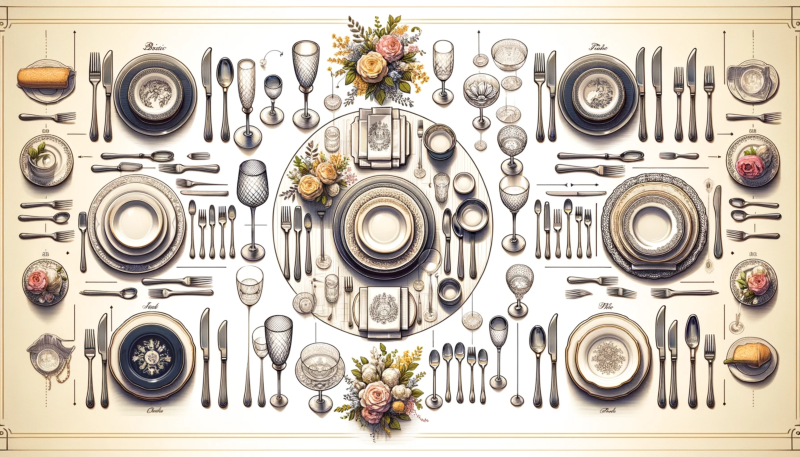The 12 Days of Christmas is not just a popular holiday song, but also a cherished tradition that dates back centuries. This festive celebration, which begins on December 25th and ends on January 5th, holds a special place in the hearts of many people around the world. Understanding the significance and history of this tradition can help us appreciate the true spirit of the holiday season.
The origins of the 12 Days of Christmas tradition can be traced back to medieval times. This period was known for its lavish feasts and extravagant celebrations, and the 12 Days of Christmas was no exception. It was a time when people came together to rejoice and spread joy.
Each of the 12 days has its own significance and is associated with a particular feast day or event. For example, the first day, December 25th, is Christmas Day, the day when Christians celebrate the birth of Jesus Christ. The twelfth day, January 5th, is known as Twelfth Night, which marks the arrival of the three wise men to visit the baby Jesus.
See Also: The Ultimate Guide to Finding the Perfect Sleeper Sofa or Sofa Bed
Today, the 12 Days of Christmas tradition is celebrated in various ways around the world. Some people exchange small gifts or cards on each of the 12 days, while others participate in religious ceremonies or attend special events. It is a time for family and friends to come together, reflect on the past year, and look forward to the future.
See Also: How to Choose the Top Upholstery and Couch Cleaning Services
Understanding and celebrating the 12 Days of Christmas tradition allows us to connect with our cultural heritage and appreciate the traditions of others. It reminds us of the importance of love, joy, and unity during the holiday season.
See Also: The Ultimate Guide to Perfectly Microwaving Sweet Potatoes in No Time
Exploring the History of the 12 Days of Christmas
The 12 Days of Christmas is a festive tradition that dates back to medieval times. It is believed to have originated in Europe, with some variations of the tradition found in different countries.
The celebration begins on Christmas Day, December 25th, and continues until January 5th, known as Twelfth Night. Each day of the 12-day period represents a specific symbol or gift. The tradition is often associated with the famous Christmas song 'The 12 Days of Christmas,' which enumerates each day's gift.
The origin of the 12 Days of Christmas tradition is unclear, but it is believed to have roots in Christian symbolism. Some theories suggest that the gifts mentioned in the song represent various aspects of the Christian faith. For example, the 'partridge in a pear tree' is said to symbolize Jesus Christ, while the other gifts represent different virtues or biblical figures.
Another theory suggests that the 12 Days of Christmas were a way to celebrate the winter solstice and the changing of the seasons. In pagan traditions, the winter solstice marked the rebirth of the sun, and the 12-day period was a time of feasting and celebration.
Throughout history, the 12 Days of Christmas tradition has evolved and adapted to different cultures and regions. In some countries, such as England, the celebration is marked by special events, feasts, and performances. In others, it is a time for family gatherings and exchanging gifts.
Today, the 12 Days of Christmas is still celebrated in various ways around the world. While the exact traditions may differ, the underlying spirit of joy, generosity, and togetherness remains the same.
In conclusion, the 12 Days of Christmas is a rich and vibrant tradition that has been passed down through generations. Whether you celebrate it with song, gifts, or simply spending time with loved ones, it is a time to embrace the holiday spirit and appreciate the joy of the season.
What is the history of the 12 days of Christmas?
The tradition of the 12 days of Christmas dates back to medieval times and is rooted in Christian beliefs. It begins on December 25th, Christmas Day, and ends on January 5th, known as Twelfth Night. These 12 days are considered a festive and celebratory period, with each day holding its own significance.
The origins of the 12 days of Christmas can be traced back to the belief that it took the three wise men or Magi, who followed the star to Bethlehem to visit the baby Jesus, 12 days to reach their destination. This journey is said to have taken place after the birth of Jesus and culminated in the presentation of gifts to the newborn king.
Over time, the 12 days of Christmas became a time for feasting, merriment, and the exchange of gifts. It was a period of joy and celebration, and each day had its own customs and traditions. For example, on December 26th, known as Boxing Day, the wealthy would give boxes of food and other gifts to their servants and those in need.
The song 'The Twelve Days of Christmas' is believed to have originated in England during the 16th century. It is a cumulative song, with each verse adding a new gift to the previous ones. The gifts mentioned in the song are often interpreted symbolically, with each one holding a deeper meaning related to religious teachings.
Today, the 12 days of Christmas are celebrated in various ways around the world. Some cultures have specific customs and traditions associated with each day, while others focus on the overall festive spirit of the season. Regardless of the specific practices, the 12 days of Christmas continue to be a time of joy, reflection, and celebration for many people.
What is the basis for the 12 days of Christmas?
The basis for the 12 days of Christmas tradition can be traced back to both religious and cultural origins. The tradition is rooted in Christianity and specifically in the celebration of the birth of Jesus Christ, which is known as Christmas.
short haircuts for women
In the Christian faith, Christmas is not just a single day but a season that lasts for 12 days, starting on December 25th and ending on January 5th. This period is often referred to as the Twelve Days of Christmas. The exact dates can vary depending on different Christian denominations and cultures.
The significance of the 12 days of Christmas comes from the biblical story of the nativity. According to the Gospel of Matthew, it took the three wise men, or the Magi, 12 days to travel to Bethlehem to visit the newborn Jesus and present him with gifts of gold, frankincense, and myrrh. This journey is believed to have taken place after the birth of Jesus, hence the celebration starting on December 25th.
Over time, the 12 days of Christmas have also become associated with various customs and traditions. In many cultures, these days are marked by feasting, gift-giving, and special religious services. Some people also follow the tradition of exchanging gifts on each of the 12 days, similar to the gifts mentioned in the popular Christmas carol 'The Twelve Days of Christmas.'
While the 12 days of Christmas tradition has religious roots, it has also become a part of secular and popular culture. The idea of counting down to Christmas and celebrating for multiple days has been embraced by people of different faiths and backgrounds as a way to extend the joy and festivities of the holiday season.
Overall, the basis for the 12 days of Christmas is deeply rooted in the Christian faith and the celebration of Jesus' birth, but it has evolved to encompass various cultural and secular traditions as well. It serves as a reminder of the importance of the Christmas season and the joyous spirit it brings.
Gifts and Meanings Behind the 12 Days of Christmas Song
The 12 Days of Christmas is a popular holiday song that dates back to the 16th century. While many people enjoy singing along to the catchy tune, not everyone is aware of the gifts and their meanings mentioned in the song. Each day represents a different gift, and these gifts hold symbolic significance.
On the first day of Christmas, the true love gives a partridge in a pear tree. The partridge represents Jesus Christ, while the pear tree symbolizes the cross. This gift signifies the gift of salvation and eternal life.
On the second day, the true love gives two turtle doves. These birds symbolize the Old and New Testaments of the Bible. The gift represents the importance of faith and the teachings of the scriptures.
Next, on the third day, the true love presents three French hens. These hens signify the three theological virtues: faith, hope, and love. This gift reminds us of the importance of these virtues in our lives.
On the fourth day, the true love gives four calling birds. These birds represent the four Gospels: Matthew, Mark, Luke, and John. The gift symbolizes the spreading of the good news and the importance of sharing the message of Christ.
Continuing with the fifth day, the true love presents five golden rings. These rings represent the first five books of the Old Testament, known as the Pentateuch. These books contain the laws and teachings of God and serve as a reminder of His guidance.
On the sixth day, the true love gives six geese a-laying. These geese symbolize the six days of creation as described in the book of Genesis. This gift highlights the beauty and wonder of God's creation.
The seventh day brings seven swans a-swimming. These swans represent the seven gifts of the Holy Spirit: wisdom, understanding, counsel, fortitude, knowledge, piety, and fear of the Lord. This gift reminds us of the blessings and guidance of the Holy Spirit in our lives.
On the eighth day, the true love presents eight maids a-milking. These maids symbolize the eight Beatitudes preached by Jesus in the Sermon on the Mount. The gift represents the values and virtues that lead to true happiness.
Next, on the ninth day, the true love gives nine ladies dancing. These ladies symbolize the nine fruits of the Holy Spirit: love, joy, peace, patience, kindness, goodness, faithfulness, gentleness, and self-control. This gift serves as a reminder of the importance of cultivating these qualities in our lives.
On the tenth day, the true love presents ten lords a-leaping. These lords represent the Ten Commandments, which provide a moral framework for living a righteous and just life. This gift reminds us of the importance of following God's commandments.
The eleventh day brings eleven pipers piping. These pipers symbolize the eleven faithful apostles of Jesus Christ. This gift represents the role of the disciples in spreading the teachings of Jesus and building the foundation of the Christian faith.
Lastly, on the twelfth day, the true love gives twelve drummers drumming. These drummers symbolize the twelve points of doctrine in the Apostles' Creed, which summarize the beliefs of the Christian faith. This gift represents the importance of faith and the core principles of Christianity.
The 12 Days of Christmas song is not just a catchy tune, but a way to celebrate the gifts and meanings that are at the heart of the holiday season. Understanding the symbolism behind each gift can deepen our appreciation for the traditions and values they represent.
What do the gifts represent in the 12 Days of Christmas?
In the popular Christmas carol 'The Twelve Days of Christmas,' each day is associated with a different gift that is given by a true love. While the song is often seen as a fun and whimsical tune, the gifts mentioned in the song actually have symbolic meanings.
Here are the gifts mentioned in the song and their representations:
- A partridge in a pear tree: The partridge represents Jesus Christ, and the pear tree symbolizes the cross.
- Two turtle doves: The two turtle doves represent the Old and New Testaments of the Bible.
- Three French hens: The three French hens symbolize the theological virtues of faith, hope, and love.
- Four calling birds: The four calling birds represent the four Gospels in the Bible: Matthew, Mark, Luke, and John.
- Five golden rings: The five golden rings symbolize the first five books of the Old Testament, also known as the Pentateuch or the Torah.
- Six geese a-laying: The six geese a-laying represent the six days of creation as described in the book of Genesis.
- Seven swans a-swimming: The seven swans a-swimming symbolize the seven gifts of the Holy Spirit: wisdom, understanding, counsel, fortitude, knowledge, piety, and fear of the Lord.
- Eight maids a-milking: The eight maids a-milking represent the eight Beatitudes from Jesus' Sermon on the Mount.
- Nine ladies dancing: The nine ladies dancing symbolize the nine fruits of the Holy Spirit: love, joy, peace, patience, kindness, goodness, faithfulness, gentleness, and self-control.
- Ten lords a-leaping: The ten lords a-leaping represent the Ten Commandments.
- Eleven pipers piping: The eleven pipers piping symbolize the eleven faithful apostles.
- Twelve drummers drumming: The twelve drummers drumming represent the twelve points of belief in the Apostles' Creed.
So, while the gifts in the song may seem random or unusual, they actually hold significant meaning within the Christian faith. The 12 Days of Christmas tradition is a way to celebrate these gifts and reflect on their symbolism during the holiday season.
What is the hidden meaning behind the 12 Days of Christmas song?
The 12 Days of Christmas song is not just a catchy holiday tune, but it also carries a hidden meaning that is often overlooked. Each verse of the song represents a different day of the Christmas season, starting from Christmas Day and ending on the eve of Epiphany, also known as the Feast of the Three Kings or Twelfth Night.
While the song may seem like a simple list of gifts, it is believed to have originated in 18th-century England as a secret way for Catholics to pass down their faith during a time when practicing Catholicism was restricted. The gifts mentioned in the song are said to represent different religious symbols and teachings.
For example, the partridge in a pear tree is said to symbolize Jesus Christ, while the two turtle doves represent the Old and New Testaments of the Bible. The three French hens are believed to stand for the three theological virtues: faith, hope, and love. The four calling birds are thought to represent the four Gospels: Matthew, Mark, Luke, and John.
The rest of the gifts in the song continue to carry symbolic meanings. The five golden rings represent the first five books of the Bible, known as the Pentateuch. The six geese a-laying symbolize the six days of creation. The seven swans a-swimming are said to represent the seven gifts of the Holy Spirit.
The eight maids a-milking are thought to symbolize the eight Beatitudes, while the nine ladies dancing represent the nine fruits of the Holy Spirit. The ten lords a-leaping are believed to symbolize the Ten Commandments, and the eleven pipers piping represent the eleven faithful apostles. Finally, the twelve drummers drumming stand for the twelve points of belief in the Apostles' Creed.
Although the hidden meanings behind the 12 Days of Christmas song may not be widely known or acknowledged, they add a deeper layer of significance to the holiday tradition. Understanding the symbolism behind each gift can help to remind us of the religious origins of Christmas and the values it represents.
Celebrating the 12 Days: Modern Gift Ideas and Traditions
As the holiday season approaches, many people are familiar with the song 'The 12 Days of Christmas,' but not everyone knows the history and significance behind this tradition. The 12 days of Christmas actually refer to the period between Christmas Day, December 25th, and the Feast of Epiphany, January 6th. During this time, it is customary to celebrate each day with special gifts and traditions.
In modern times, the 12 days of Christmas have taken on a new meaning, and many people use this period as an opportunity to exchange gifts with their loved ones. While the traditional gifts mentioned in the song may not be practical or feasible for everyone, there are plenty of modern gift ideas that can be incorporated into this festive tradition.
1. Personalized Jewelry: Giving a piece of personalized jewelry, such as a necklace or bracelet, can be a meaningful gift that will be treasured for years to come. You can have the recipient's initials or birthstone engraved on the piece to make it even more special.
2. Experience Gifts: Instead of material possessions, consider giving the gift of an experience. This could be tickets to a concert, a spa day, or a cooking class. The memories created from these experiences will last much longer than a physical gift.
3. Subscription Boxes: Subscription boxes have become increasingly popular in recent years. You can find a subscription box for almost any interest, whether it's beauty products, gourmet food, or even books. This gift keeps on giving as the recipient will receive a new surprise every month.
4. DIY Gifts: Handmade gifts are always appreciated because they show thought and effort. Consider making a personalized photo album, knitting a scarf, or baking a batch of cookies. These heartfelt gifts will surely bring a smile to the recipient's face.
5. Charitable Donations: Instead of exchanging material gifts, you can choose to donate to a charitable organization on behalf of your loved ones. This is a meaningful way to give back and make a difference during the holiday season.
6. Technology Gadgets: For the tech-savvy individuals in your life, consider giving them the latest gadgets or accessories. From smartphones to smartwatches, there is a wide range of options to choose from.
7. Wellness Gifts: In today's busy world, wellness gifts are a great way to show someone you care about their well-being. This could be a yoga mat, essential oils, or a subscription to a meditation app.
While the traditional 12 days of Christmas may have different meanings for different cultures and individuals, the modern interpretation allows for creativity and personalization. Whether you choose to exchange gifts or focus on experiences and giving back, the 12 days can be a special time to celebrate and show appreciation for your loved ones.
Remember, the true spirit of the 12 days of Christmas lies in the joy of giving and celebrating with family and friends.
What do people do for the twelve days of Christmas?
During the twelve days of Christmas, people engage in various activities to celebrate this festive tradition. These activities differ across different cultures and countries, but they all revolve around the theme of joy, giving, and spending time with loved ones.
One common practice is exchanging gifts. Friends, family members, and colleagues exchange presents as a way to show appreciation and love. The gifts can range from small tokens of affection to more significant and thoughtful items.
Another popular activity is attending parties and gatherings. People organize Christmas parties, dinners, and get-togethers to celebrate the holiday season. These events are filled with laughter, music, and delicious food, creating a festive and joyful atmosphere.
Some cultures have specific traditions for each of the twelve days. For example, in some parts of Europe, each day is associated with a specific saint or religious figure. People may participate in religious services or perform acts of charity in honor of these saints.
Additionally, many people take the opportunity to relax and enjoy time off work or school during the twelve days of Christmas. This period is seen as a time of rest and rejuvenation, allowing individuals to recharge before the start of the new year.
Overall, the twelve days of Christmas are a time for celebration, reflection, and togetherness. Whether through gift-giving, attending parties, practicing religious traditions, or simply taking a break, people make the most of this festive season to create lasting memories with their loved ones.
How do we celebrate the 12 days of Christmas?
The 12 days of Christmas is a festive time that is celebrated in many countries around the world. It begins on Christmas Day, December 25th, and continues until January 5th, the day before Epiphany. During these 12 days, people engage in various traditions and activities to commemorate the holiday season.
One common way to celebrate the 12 days of Christmas is by exchanging gifts. Some people follow the tradition of giving one gift for each of the 12 days, while others may choose to exchange gifts on specific days, such as Christmas Day or New Year's Day. This tradition of gift-giving is believed to have originated from the biblical story of the three wise men bringing gifts to baby Jesus.
In addition to gift-giving, many people also participate in festive feasts and gatherings with family and friends. It is common to have special meals and parties throughout the 12 days, with traditional dishes and drinks being served. These gatherings provide an opportunity for loved ones to come together and celebrate the holiday season.
Another popular tradition during the 12 days of Christmas is the singing of carols. Many communities organize carol singing events where people gather to sing traditional Christmas songs. These songs often tell the story of the birth of Jesus and spread joy and cheer during the festive season.
Some countries have unique customs and activities that are specific to their culture. For example, in Ireland, it is common to go 'wren hunting' on St. Stephen's Day, the day after Christmas. This involves going from house to house with a fake wren, singing and collecting money for charity.
Overall, the 12 days of Christmas is a time of joy, celebration, and togetherness. It is a chance to reflect on the meaning of the holiday season and create lasting memories with loved ones. Whether it's through gift-giving, feasting, singing carols, or participating in cultural traditions, the 12 days of Christmas bring people together in the spirit of love and goodwill.
| Traditions | Countries |
|---|---|
| Gift-giving | Many countries |
| Festive feasts | Various countries |
| Carol singing | Global |
| Wren hunting | Ireland |
Understanding the Timeline: When Do the 12 Days of Christmas Start and End?
The 12 Days of Christmas is a festive tradition that starts on Christmas Day, December 25th, and ends on the Twelfth Night, January 5th. This timeline is based on the Christian liturgical calendar and is observed in many countries around the world.
The first day of the 12 Days of Christmas is Christmas Day itself. It is a day of celebration and marks the birth of Jesus Christ. This day is filled with joy, gift-giving, and feasting as families and friends come together to commemorate the holiday.
Following Christmas Day, the 12 Days of Christmas continue until the Twelfth Night, which is the evening of January 5th. This night is also known as Epiphany Eve, as it precedes the Christian feast day of Epiphany on January 6th.
During the 12 Days of Christmas, each day is associated with a specific gift or symbol. According to the popular Christmas carol 'The Twelve Days of Christmas,' the song lists various gifts given by a true love. These gifts include birds, musicians, and other extravagant presents.
While the 12 Days of Christmas traditionally end on the Twelfth Night, some countries and cultures extend the celebrations until Candlemas on February 2nd. Candlemas marks the presentation of Jesus at the Temple and the purification of the Virgin Mary. It is a time for religious observance and lighting candles.
Understanding the timeline of the 12 Days of Christmas is crucial to fully appreciating and participating in this beloved tradition. It allows individuals to pace their festivities and enjoy the holiday season for an extended period of time.
| Day | Date | Symbol |
|---|---|---|
| 1st | December 25th | A partridge in a pear tree |
| 2nd | December 26th | Two turtle doves |
| 3rd | December 27th | Three French hens |
| 4th | December 28th | Four calling birds |
| 5th | December 29th | Five golden rings |
| 6th | December 30th | Six geese a-laying |
| 7th | December 31st | Seven swans a-swimming |
| 8th | January 1st | Eight maids a-milking |
| 9th | January 2nd | Nine ladies dancing |
| 10th | January 3rd | Ten lords a-leaping |
| 11th | January 4th | Eleven pipers piping |
| 12th | January 5th | Twelve drummers drumming |
What date do you start 12 days of Christmas?
The 12 Days of Christmas is a festive tradition that begins on December 25th and ends on January 5th. The first day of Christmas is December 25th, also known as Christmas Day. This is the day that Christians around the world celebrate the birth of Jesus Christ.
After Christmas Day, the 12 Days of Christmas officially begin. Each day represents a different gift that is given, according to the popular Christmas carol 'The 12 Days of Christmas.' The gifts range from partridges in pear trees to drummers drumming, and each day adds a new gift to the list.
The 12 Days of Christmas tradition is not only celebrated by Christians, but also by people of various faiths and cultures. It is a time of joy, celebration, and giving. Many people use this time to spend with family and loved ones, exchange gifts, and participate in festive activities.
So, to answer the question, the 12 Days of Christmas start on December 25th, Christmas Day, and continue until January 5th, also known as Twelfth Night. It is a special time of year that brings people together and spreads holiday cheer.
Q&A:
What is the meaning behind the 12 Days of Christmas tradition?
The 12 Days of Christmas tradition is a Christian celebration that starts on December 25th and ends on January 5th, known as Epiphany. It commemorates the time between the birth of Jesus and the arrival of the Three Wise Men. Each day represents a different aspect of the story, with the gifts mentioned in the popular song symbolizing various Christian symbols and virtues.
How did the tradition of the 12 Days of Christmas start?
The tradition of the 12 Days of Christmas originated in Western Europe during the Middle Ages. It was a way to celebrate the Christmas season and incorporate religious symbolism into the festivities. The song 'The 12 Days of Christmas' is believed to have been written in England in the late 18th century and became popular as a way to teach children about the Christian faith.
What are the gifts mentioned in 'The 12 Days of Christmas' song?
The gifts mentioned in 'The 12 Days of Christmas' song are: a partridge in a pear tree, two turtle doves, three French hens, four calling birds, five golden rings, six geese a-laying, seven swans a-swimming, eight maids a-milking, nine ladies dancing, ten lords a-leaping, eleven pipers piping, and twelve drummers drumming. Each gift has a symbolic meaning, such as the partridge representing Jesus and the rings representing the apostles.
How is the 12 Days of Christmas celebrated today?
The 12 Days of Christmas is celebrated in various ways today. Some people follow the religious aspect of the tradition by attending church services and participating in Epiphany celebrations. Others may exchange small gifts or perform acts of charity each day of the 12-day period. In some cultures, there are specific traditions and customs associated with each day, such as baking special cakes or visiting friends and family.
Are there any variations of the 12 Days of Christmas tradition?
Yes, there are variations of the 12 Days of Christmas tradition in different cultures and regions. For example, in some countries, the celebration starts on December 26th and ends on January 6th, while in others it begins on December 25th and ends on January 5th. Additionally, the specific customs and rituals may vary, such as the types of gifts exchanged or the specific activities done each day.
What is the history behind the 12 Days of Christmas tradition?
The 12 Days of Christmas tradition dates back to medieval times in Europe. It is believed to have originated as a Christian celebration that begins on Christmas Day and continues until the Feast of Epiphany on January 6th. During these 12 days, people would engage in various festivities and religious observances.
What are the different ways people celebrate the 12 Days of Christmas?
There are various ways people celebrate the 12 Days of Christmas. Some traditions include exchanging gifts each day, singing carols specific to each day, attending church services, and participating in community events. Some people also use this time to reflect on the meaning of Christmas and spend quality time with family and friends.
Why are there 12 days in the Christmas tradition?
The number 12 has a significant meaning in Christianity. It represents the 12 apostles of Jesus Christ. The 12 Days of Christmas tradition is believed to have been influenced by this symbolism. Additionally, the 12 days also correspond to the time it took for the biblical wise men to reach the baby Jesus after his birth.





